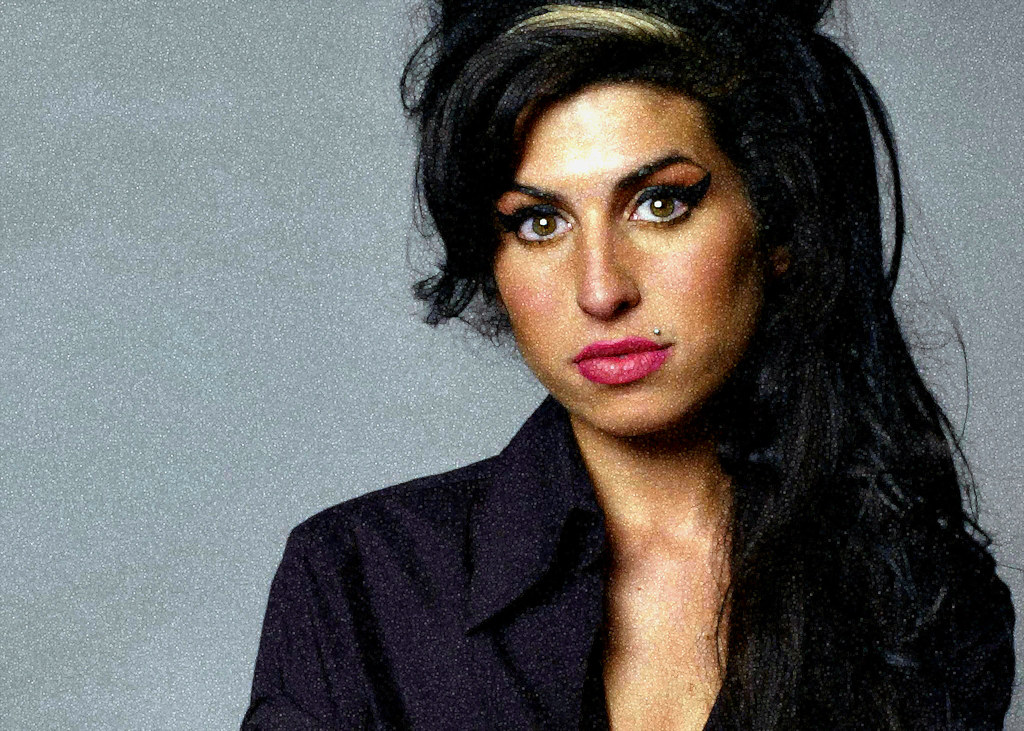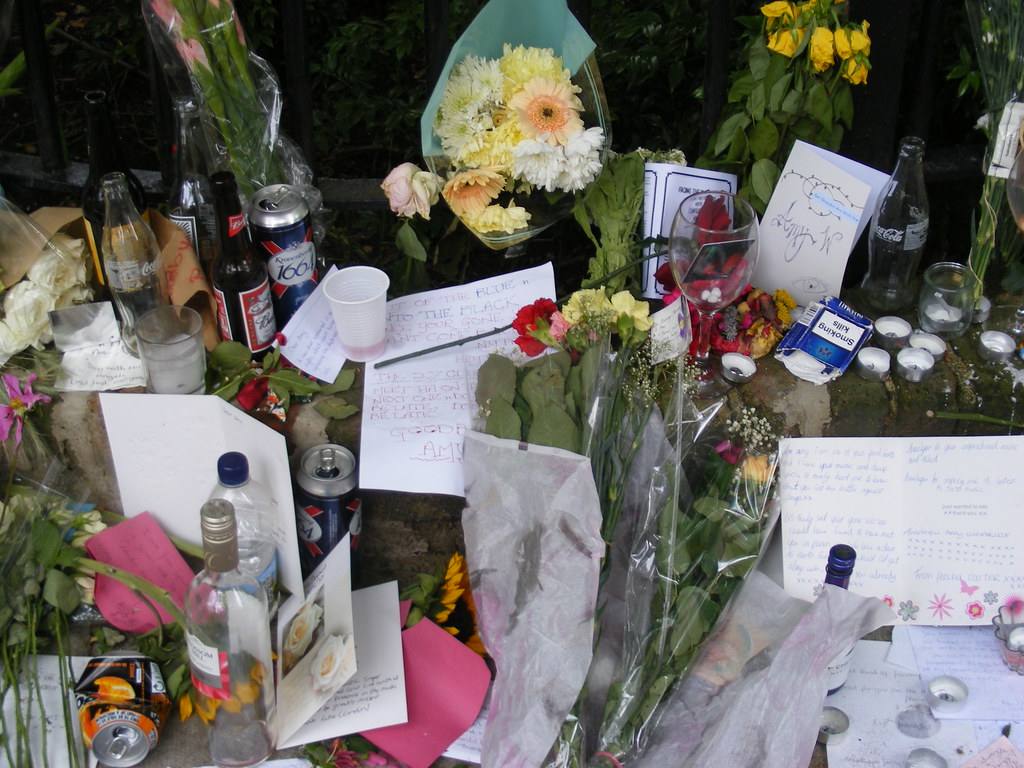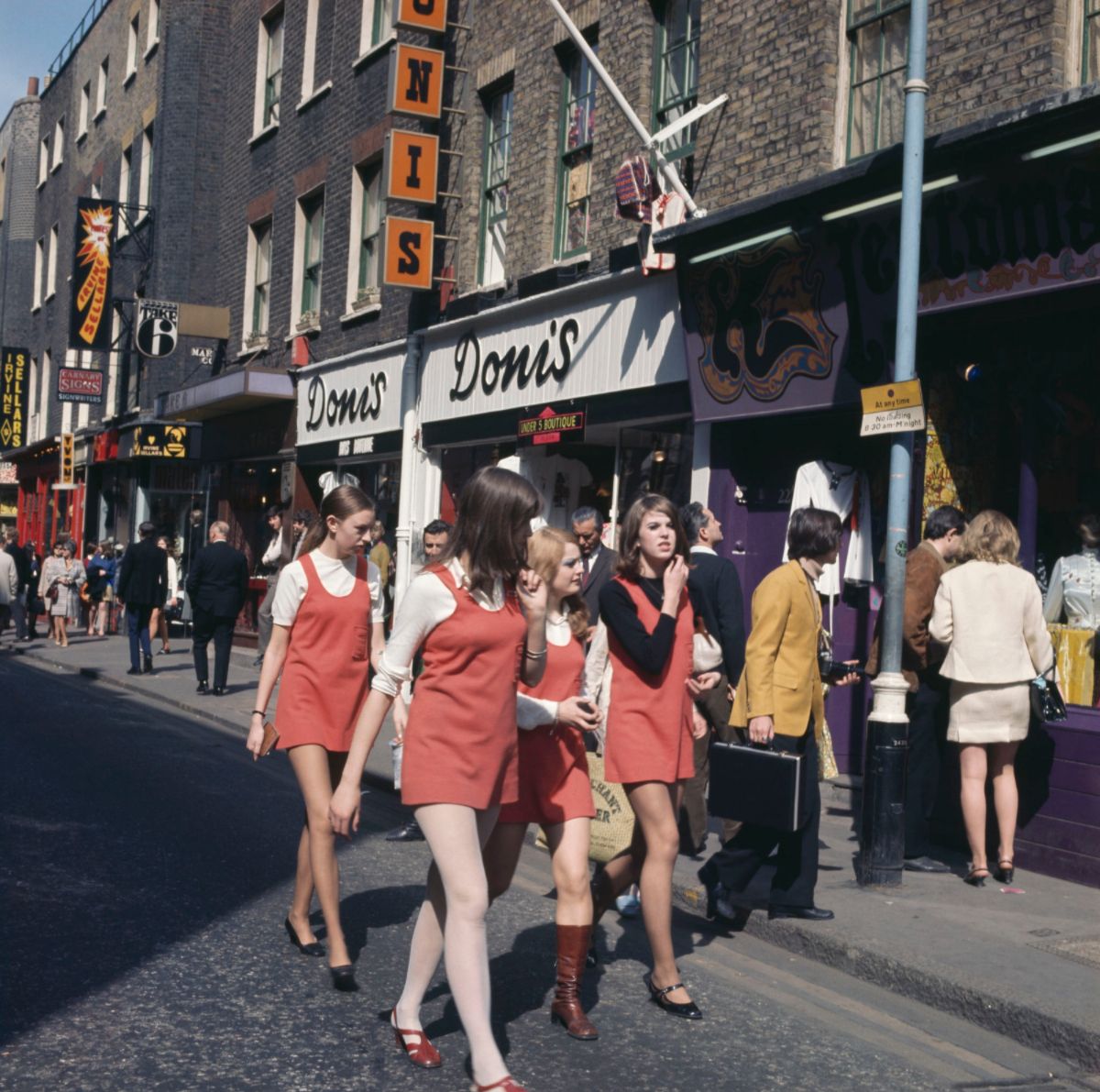
The world of music has always been captivated by the rise and fall of its brightest stars, but few stories echo with the poignant tragedy and raw talent of Amy Winehouse quite like hers. A voice that defied categorization, blending jazz’s soulful depths with R&B’s infectious rhythms, Amy Winehouse carved an indelible mark on the soundscape of the 21st century. Her journey, however, was as heartbreakingly public as it was profoundly musical, culminating in an untimely death at the age of just 27, leaving behind a legacy that continues to resonate with powerful, often melancholic, beauty.
In the years since her passing on July 23, 2011, various narratives have emerged, some attempting to capture the essence of her final moments. One such narrative, perpetuated by a widely shared video in May 2024, claimed to show her last performance, amassing millions of views across social media platforms. Yet, like many facets of her complex life, this claim was miscaptioned, casting a shadow of confusion over the true chronology of her final days on stage.
To truly understand the haunting story of Amy Winehouse’s last performance, we must look beyond the viral clips and delve into the intricate tapestry of her extraordinary talent, her profound struggles, and the immense pressures that defined her too-short career. This in-depth exploration will journey through the defining moments of her artistic ascent, the relentless glare of the spotlight that accompanied it, and the escalating personal battles that ultimately overshadowed her undeniable gift. We will meticulously unpack the context surrounding her declining performances and dissect the misinformation that often blurs the lines of her public narrative. By doing so, we aim to offer an authoritative and evocative account of the forces at play, setting the stage for the dramatic and ultimately tragic events that marked her farewell to the world’s stage.

1. **The Persistent Misconception of Her “Last Performance”**
In the digital age, a single video can reshape public memory, and for Amy Winehouse, this became tragically apparent in May 2024. A clip circulated widely across X, Facebook, and YouTube, purporting to show the iconic singer’s final performance before her death. The accompanying caption, charged with an accusatory tone, declared, “This was Amy Winehouse’s last performance before her death. Hollywood should be exposed for what they did to her,” generating over 16.4 million views and cementing a potent, yet factually incorrect, narrative in the minds of many.
The footage itself was undeniably real, capturing Winehouse in a vibrant, albeit chaotic, stage setting. However, the critical detail lay in its timestamp: August 17, 2008. This placed the performance at Britain’s V Festival in Chelmsford, Essex, a full three years before her passing on July 23, 2011. Images published by Getty and videos on YouTube, showing Winehouse in the same distinctive outfit, corroborated this date and location, further supported by V Festival’s 2008 line-up poster, which featured the legendary singer on its billing.
This pervasive miscaptioning highlights a crucial aspect of her public image—how sensationalism often eclipses accuracy. Despite the emotional resonance of the video, it was an echo from a different chapter of her life, one where her struggles were already becoming tragically apparent, but far from her actual final bow. She performed numerous times between that August 2008 appearance and her death, making it imperative to separate widely shared, yet misleading, content from the stark realities of her final performances.

2. **A Voice That Echoed Through Time**
Nobody possessed a voice quite like Amy Winehouse’s, a rare talent that emerged with an almost supernatural blend of raw power and delicate vulnerability. She was, without question, a “once-in-a-generation talent,” capable of capturing the imagination of both mainstream pop charts and the discerning aficionados of timeless soul music. Her instrument was a “spine-tinglingly soulful voice,” instantly recognizable and profoundly moving, setting her apart in an era often defined by manufactured pop.
Born Amy Jade Winehouse on September 14, 1983, in Southgate, London, her musical inclinations were nurtured from an early age. Her father, Mitch Winehouse, a taxi driver and window panel installer, introduced her to jazz legends like Frank Sinatra, singing snippets of “Fly Me to the Moon,” which became a cherished anthem for young Amy. Her grandmother, Cynthia, herself a former singer, noticed her innate talent early on and encouraged her to attend tap dance and singing lessons, laying the groundwork for a future icon.
By the age of 19, Amy’s talent was undeniable. She taught herself guitar and began crafting her own songs, a reflection of her “heart-on-her-sleeve style of songwriting that laid her emotions bare.” This innate connection to music, combined with a singular style and personable attitude, not only distinguished her but also “paved the way for neo-soul stars like Adele, Sam Smith, and Emeli Sandé to storm the charts themselves,” solidifying her role as a foundational figure in contemporary soul music.

3. **The Phenomenal Ascent of “Back to Black”**
While her debut album, “Frank,” released in October 2003, earned critical acclaim and two Brit Award nominations, it was her second album, “Back to Black,” that catapulted Amy Winehouse to global superstardom. Released in October 2006, the album marked a distinct shift away from jazz towards a more soul-infused sound, a gamble that paid off immensely. It “went straight to number one in the UK and number seven in the US,” quickly becoming a cultural phenomenon.
“Back to Black” was more than just an album; it was a watershed moment in music, spawning five hugely successful singles, all penned by Amy herself: ‘Rehab’, ‘You Know I’m No Good’, ‘Back to Black’, ‘Tears Dry on Their Own’, and ‘Love Is a Losing Game’. Each track showcased her profound lyrical depth and vocal prowess, with ‘Rehab’ notably named “the best song of 2007” by Time magazine, demonstrating its widespread critical and commercial impact.
The album’s success was unprecedented. It became “the UK’s best-selling album of 2007” and cemented her status as an international icon, culminating in an extraordinary five Grammy Awards in 2008 from six nominations. This period represented the zenith of her professional career, a time when her artistic vision was fully realized and celebrated on a global scale, leaving an indelible mark on music history before her struggles would tragically overshadow her extraordinary achievements.

4. **The Double-Edged Sword of Fame**
As Amy Winehouse’s star ascended with “Back to Black,” so too did the intensity of media scrutiny, transforming her personal life into a public spectacle. In an era notably lacking in “media sympathy for celebrities struggling in the limelight,” Amy found herself constantly “feature[d] prominently in the headlines.” This relentless attention became a “cautionary tale of the excesses of fame and the following fallout,” eroding any semblance of privacy she once held.
Tabloid culture, fueled by paparazzi, eagerly documented every misstep. “Tabloid photos of Amy stumbling out of her local Camden pub or drunkenly arguing on the streets with her previous partner, Blake Fielder-Civil, were a frequent occurrence” as her fame reached monumental heights. This invasive coverage, far from offering help, seemed “primed to humiliate her,” presenting a distorted image of a troubled artist struggling in plain sight for the world’s consumption.
The constant public dissection of her struggles took a heavy toll. Despite her immense talent, the barrage of negative coverage led to a point where “she’d lost the faith of her fans and her peers,” as many grew weary of her erratic behavior. This relentless and often cruel spotlight not only impacted her personal well-being but also deeply influenced perceptions of her artistic credibility, illustrating the devastating power of fame when coupled with a public battle against addiction.

5. **Shifting Management, Shifting Fortunes**
The intricate balance between Amy Winehouse’s artistic aspirations and her burgeoning personal struggles was further complicated by a significant change in her management soon after the release of “Back to Black.” She replaced Nick Shymansky, a “long-time friend of Amy’s who worked with her as early as her days singing in jazz and dive bars as an unknown,” with promoter Raye Cosbert. This shift marked a critical turning point, influencing the trajectory of her final years.
Shymansky, with his history of friendship and understanding of Amy’s early career, represented a more personal approach to her management. Cosbert, however, was described as “a reputed promoter whose job was to get Amy on stage every night,” often adopting a policy of “turning a blind eye to her habits off-stage.” This transactional dynamic prioritized performance dates over the singer’s well-being, inadvertently creating an environment where her escalating addictions could thrive unchecked.
This shift in managerial philosophy had “often hazardous outcome[s]” for Amy’s live performances. The focus on fulfilling contractual obligations meant that “as soon as Amy made the stage, his job was fulfilled,” irrespective of her inebriated state. This strategic pivot, prioritizing public appearances over personal stability, undeniably contributed to the decline in her performance quality and amplified the visible signs of her distress in front of “an unforgiving public.”

6. **The Gripping Descent into Addiction**
Behind the dazzling success of “Back to Black” lay a much darker reality: Amy Winehouse’s intensifying battle with drugs and alcohol. Her dependence on substances and an eating disorder first came to public light around 2005, initiating a tragic, well-documented descent. Her family believed that “the passing of her grandmother in mid-2006,” who had been a vital source of stability and support, “triggered the downward spiral into addiction, signaling a profound loss that amplified her vulnerabilities.
The severity of her addiction became tragically evident in August 2007 when she was hospitalized following an overdose. Reports indicated a dangerous cocktail of “heroin, ecstasy, cocaine, ketamine and alcohol in her system,” a terrifying experience that led her to believe “that it was over for me.” Despite entering treatment programs and making attempts at sobriety, the grip of addiction proved relentless, with relapses frequently reported, including a UK tabloid posting a video allegedly showing her smoking crack cocaine.
While Amy did eventually kick drugs, famously stating, “I literally woke up one day and was like, ‘I don’t want to do this anymore,’” her struggle tragically pivoted to alcohol. Her stepmother, Jane, observed that Amy was often “at her worst during ‘calm’ periods,” highlighting that while music offered focus, periods without it left her exposed. This inability to conquer her alcohol addiction would ultimately become her undoing, a haunting prelude to her eventual demise at just 27 years old.

7. **A Career Marred by Public Struggles**
The chaotic state of Amy Winehouse’s personal life inevitably cast a long shadow over her professional career, creating a heartbreaking cycle of promise and disappointment. Progress on her anticipated follow-up to “Back to Black” was “frequently dashed by her relapsing,” indicating how deeply her addiction interfered with her creative and working life. Her “life would spiral out of control” soon after the Grammy and BRIT Award-winning album’s release, profoundly altering her artistic trajectory.
During the last year of her life, the impact of her dependence on alcohol became acutely visible on stage, as her “performances worsened.” This period was characterized by distressing incidents where, if she was “too intoxicated, her shows were either cancelled halfway through or wouldn’t even go ahead full-stop.” Audiences witnessed firsthand her struggle to maintain composure, as “she slurred her words and forgot her lyrics,” a stark contrast to the powerful, precise vocalist the world had come to adore.
These public struggles created an agonizing dilemma for her team and her family. The push to maintain her career often clashed with the urgent need for her personal recovery, leading to “often hazardous outcome[s]” during her performances. The image of a struggling, inebriated Amy on stage became a recurring, painful motif, etching into the public consciousness the tragic intersection of extraordinary talent and profound vulnerability, ultimately setting the stage for her final, infamous performances.

8. **The Infamous Belgrade Concert – Her Final Official Show**
The ambitious 12-leg European tour in June 2011 was optimistically heralded as a potential comeback for Amy Winehouse. However, the inaugural performance, held at Kalemegdan Park in Belgrade, Serbia, on June 18, 2011, as part of the Tuborg Festival, quickly devolved into what would tragically become her “final-ever official show” and was widely branded a “disaster.” This performance was meant to signify a new chapter, yet it instead laid bare the profound depths of her ongoing struggles.
Reports from the event painted a harrowing picture of a “staggering flop.” Amy arrived on stage an hour late, visibly disoriented, and further confused the audience by first greeting them “in Athens” and then “in New York.” Adding to the chaotic scene, she struggled to remember the names of her own band members, a detail noted by the New Zealand Herald, which described “an attempt to introduce the members of her bemused band which appeared to be stymied by her inability to remember their names.”
The public reaction was immediate and unforgiving. Serbian defence minister Dragan Sutanovac publicly denounced the show as “a huge shame and a disappointment,” a sentiment echoed by many in the 20,000-strong audience. It was painfully clear that this performance was not a triumphant return but rather “a clear indication that Amy was in need of serious care,” a desperate plea for help disguised as a concert.

9. **A Painful Spectacle Unfolds on Stage**
The footage of Amy Winehouse’s Belgrade performance remains profoundly unsettling, an “uncomfortable viewing” experience that captures the raw, unedited agony of her decline. For nearly 45 minutes, she stumbled across the stage, her voice, once so precise and powerful, now slurred and hesitant as she frequently forgot her words and lyrics, a heartbreaking shadow of her former self.
During songs like ‘Addicted,’ ‘Just Friends,’ and ‘Valerie,’ her struggle was palpable. She became heavily reliant on her backing singer, Zalon Thompson, who had to vocally “push her through ‘Tears Dry On Their Own'” and often “carry on” singing when Amy herself stopped. In one particularly poignant moment captured on video, Thompson even had to physically “hold her up on stage,” a stark visual testament to her profound vulnerability.
Perhaps the most devastating moment occurred during ‘Some Unholy War.’ As Amy faltered, forgetting the lyrics, Zalon whispered them into her ear. This small, intimate act of assistance triggered a profound emotional response; she became visibly emotional and broke down at the fact that she’s struggling. The audience’s response—”boos” echoing through the venue—only intensified her distress, creating a moment of utter isolation where she “hugs herself and holds back her tears.” For the remainder of the performance, her contributions were “off-key and out of sync,” with her backing singers taking the dominant role, effectively carrying the show to its strained conclusion.

10. **The Immediate Aftermath and Tour Cancellation**
The curtain falling on the Belgrade stage marked a definitive, tragic end. “After she and her band left the stage, sadly, Amy would never return.” The disastrous nature of the performance quickly cascaded into serious consequences, with her next two scheduled shows in Turkey and Greece being “soon cancelled.” It became painfully evident that the ambitious European tour, designed for a grand comeback, was untenable in her current state.
Not long after, the devastating decision was made to cancel the entirety of her remaining European tour dates. A statement issued by her management declared, “Everyone involved wishes to do everything they can to help her return to her best, and she will be given as long as it takes for this to happen.” This public acknowledgment of her critical condition underscored the dashed hopes for her recovery and the immense pressure she was under, confirming that the comeback dream was tragically out of reach.
The gravity of the Belgrade event was not lost on her peers. Moby, who was also performing at the festival that day, recounted his horror: “From backstage, I could hear the audience booing louder than the music. Amy was just standing there, swaying back and forth and mumbling occasionally. She was on stage for about 30 minutes, then she left and was lying down on a flight case backstage, surrounded by some people. I was horrified.” This raw observation from a fellow artist offered a powerful glimpse into the private despair behind the public spectacle.

11. **Her Last Public Appearance: A Poignant Duet with Dionne Bromfield**
Though the Belgrade concert marked her final official show, Amy Winehouse made one more poignant, albeit brief, public appearance just a month later. On July 20, 2011, a mere three days before her untimely death, she stepped onto the stage at London’s iTunes Festival at the Roundhouse in Camden to join her goddaughter, Dionne Bromfield, who was supporting the boy band The Wanted.
This moment, captured by mobile phones, was to be the superstar’s “last public performance.” Amy joined Bromfield for a rendition of the classic R&B song ‘Mama Said,’ offering a fleeting glimpse of her enduring musical spirit. However, the footage reveals that “Winehouse sang very little of the song,” a testament to her ongoing struggles even in this seemingly lighter context. Despite this, backstage photographs from the event showed her “looking happy and healthy,” a bittersweet image contrasting with the turmoil that still plagued her.
Dionne Bromfield herself later reflected on the profound significance of that night, describing it as a “stand-out moment” amidst the news coverage surrounding Winehouse’s death. She eloquently captured the essence of the moment: “She’s so evidently falling apart but trying so desperately to be there for her goddaughter.” It was a powerful, heartbreaking display of her deep love and unwavering support for her goddaughter, even as her own life teetered on the brink.

12. **The Tragic Final Days and Conversations**
The period immediately preceding Amy Winehouse’s death was marked by a series of critical, heartbreaking conversations and events. Her GP, Dr. Christina Romete, visited her at home on the evening of July 22, 2011, just hours before her passing. During this visit, Amy made a candid and painful admission: she “had not drunk alcohol from July 3 until July 20, when she started drinking again,” highlighting the relentless cycle of her addiction.
In a moment of profound vulnerability and self-awareness, Amy told her doctor, “I don’t want to die.” This desperate plea underscored her understanding of the severity of her situation. Yet, despite her distress, she remained fiercely independent, “turn[ing] down offers for help with her mental health,” as she was described as “very determined to do everything her way, including her therapy,” reflecting her deeply ingrained convictions.
Dr. Romete noted that Amy was “calm and somewhat guilty” during their conversation, and while a little “tipsy,” she was still able to hold a coherent discussion. The doctor had “repeatedly warned Amy about the dangers of alcohol, including the life-threatening consequences.” These warnings, tragically, went unheeded. Her bassist, Dale Davis, later recalled a chilling conversation where Amy confided in his ex-wife “that she didn’t think she’d see 28,” a premonition that would soon prove tragically accurate.

13. **An Untimely End at 27: Accidental Alcohol Poisoning**
The world awoke on July 23, 2011, to the devastating news that Amy Winehouse had been found dead in her Camden flat. Her bodyguard, Andrew Morris, discovered her lifeless body on her bed at approximately 3 pm, after she had spent a seemingly normal evening watching television and listening to music. The shock resonated globally, bringing a sudden and tragic end to a life marked by extraordinary talent and profound struggle.
After a thorough second inquest in 2013, the official cause of her death was confirmed as “accidental alcohol poisoning.” The findings were stark and heartbreaking: her blood-alcohol reading was an extraordinarily high “0.416,” and “two large empty vodka bottles [were found] beside her when she was found.” At just 27 years old, Amy Winehouse became another tragic member of the infamous “27 Club,” a group of iconic musicians who died at that same young age.
Her funeral, held on July 26, 2011, was a somber affair, with mourners singing her favorite Carole King song, ‘So Far Away.’ The news of her passing “shocked the world,” sparking an “outpouring of grief” that quickly mingled with anger and blame, directed at the relentless media scrutiny and the systemic failures that had surrounded her. Her “fragility so profound” became a collective lament, cementing her story as a cautionary tale of fame and addiction.

14. **An Indelible Legacy and Enduring Impact**
Despite the tragic circumstances of her passing, Amy Winehouse remains “one of the great British talents of our generation.” Her music, infused “with its raw emotion,” continues to transcend generations and resonate globally, a testament to her “incredible voice and timeless songs” that are forever “etched in music history.” She truly left an “indelible mark on the soundscape of the 21st century,” reshaping the contemporary musical landscape.
Her artistic influence is undeniable and far-reaching. Her unique voice, singular style, and “heart-on-her-sleeve style of songwriting” created a distinctive sound that “paved the way for neo-soul stars like Adele, Sam Smith, and Emeli Sandé to storm the charts themselves.” Her “spine-tinglingly soulful voice” continues to be celebrated as a benchmark of raw talent and authenticity, proving her to be a generational talent whose impact is still felt today.
In the wake of her death, her parents, Mitch and Janis Winehouse, established the Amy Winehouse Foundation “to prevent harm from drug misuse among young people,” ensuring her legacy would also serve a humanitarian purpose. Janis cherishes their last day together, recalling Amy repeatedly “kissing me on the cheek and saying, ‘I love you, Mummy’,” a poignant memory. Mitch emphasized her true character: “She was a loyal, generous friend. She’d help anybody… Just a wonderful human being.” Her story, a harrowing blend of genius and vulnerability, ultimately “changed the way we treated celebrities in the media, especially those who were clearly struggling,” ensuring her profound, albeit bittersweet, mark on both music and celebrity culture will endure for decades to come.



